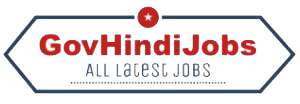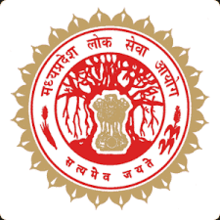Last Updated on मई 10, 2020 by Gov Hindi Jobs
गोवा लोक सेवा आयोग में सह – आचार्य (फार्मास्युटिकल रसायन शास्त्र) पाठ्यक्रम – Goa PSC Associate Professors in Pharmaceutical Chemistry Syllabus
Syllabus For Computer Based Recruitment Test (Cbrt) For The Post Of Associate Professors In Pharmaceutical Chemistry Under Goa College Of Pharmacy
(Advt. No. 08 Year 2019)
| I. General English including Grammar | 5 marks |
| II. General Knowledge, Current Affairs and Events of National and International Importance | 10 marks |
| III. Logical Reasoning and Analytical Ability | 10 marks |
| IV. Core: | 50 marks |
1. Organic reactive Intermediates: Carbocations, carbanions, carbenes, nitrenes and free radicals, their formation, stability and applications in synthesis.
2. Reaction mechanisms: Types and methods of determination of reaction mechanisms
3. Reactions, mechanisms, their relative reactivity and orientations
i. Addition reactions: Free radical, Nucleophilic and Electrophilic reactions
ii. Substitution reactions: Nucleophilic –uni and bimolecular reactions (SN1 and SN2), Electrophilic substitution
iii. Elimination reactions (E1, E2, Hoffman and Seytzeff’s rule ) E1cb reactions
iv. Rearrangement reactions
4. Study of mechanisms and applications of the following:
Aldol condensation, Riemer Tiemann reaction, Ullmann coupling reactions, Dieckmann reaction,Doebner Miller reaction, Mitsunobu reaction, Mannich reaction, Sandmeyer reaction, Vilsmeyer – Haack reaction, Bayer- Villiger oxidation, Michael addition. Sharpless asymmetric epoxidation, Shapiro & Suzuki reaction, and Ozonolysis
5. Heterocyclic Chemistry:
a) Synthesis (along with mechanism involved) of drugs containing five, six membered and fused heterocyclic systems- Knorr’s pyrazole synthesis, Debus-Radziszewski Imidazole synthesis, Pinner pyrimidine synthesis, Combes quinoline synthesis, Bernthsen acridine synthesis, Smiles rearrangement and Traube purine synthesis.
b) Synthesis of Ketoconazole, Metronidazole, Celecoxib, Terconazole, Alprazolam, Triamterene, Sulfamerazine,Trimethoprim, Chloroquine, Metamizole,
Hydroxychloroquine, Quinacrine, Prochlorphenazine, Promazine, Chlorpromazine, Theophylline and Thioguanine.
6. Drug discovery: Stages of drug discovery, lead discovery, ,identification, validation and diversity of drug targets.
Biological drug targets: Receptors, types, binding and activation, theories of drug receptor interaction, drug receptor interactions, agonists vs antagonists, artificial enzymes.
7. Prodrug Design and Analog design:
a) Prodrug design: Basic concept, Carrier linked prodrugs/ Bioprecursors, Prodrugs of functional group, Prodrugs to improve patient acceptability, Drug solubility, Drug absorption and distribution, site specific drug delivery and sustained drug action. Rationale of prodrug design and practical consideration of prodrug design.
b) Combating drug resistance: Causes for drug resistance, strategies to combat drug resistance in antibiotics and anticancer therapy, Genetic principles of drug resistance.
c) Analog Design: Introduction, Classical & Non classical, Bioisosteric replacement strategies, rigid analogs, alteration of chain branching, changes in ring size, ring position isomers, design of stereo isomers and geometric isomers, fragments of a lead molecule, variation in inter atomic
distance.
8. Medicinal chemistry aspects of the following class of drugs Systematic study, SAR, Mechanism of action and synthesis of new generation
molecules of following class of drugs:
a) Anti-hypertensive drugs, Psychoactive drugs, Anticonvulsant drugs, H1 & H2 receptor antagonist, COX1 & COX2 inhibitors, Adrenergic & Cholinergic agents, Antineoplastic and Antiviral agents.
b) Stereochemistry and Drug action: Realization that stereo selectivity is a pre-requisite for evolution. Role of chirality in selective and specific therapeutic agents. Case studies, Enantio selectivity in drug adsorption, metabolism, distribution and elimination
9. Rational Design of Enzyme Inhibitors: Enzyme kinetics & Principles of Enzyme inhibitors, Enzyme inhibitors in medicine, Enzyme inhibitors in basic research, rational design of non-covalently and covalently binding enzyme inhibitors.
10. Study of Natural products as leads for new pharmaceuticals for the following class of drugs:
a) Drugs Affecting the Central Nervous System: Morphine Alkaloids
b) Anticancer Drugs: Paclitaxel and Docetaxel, Etoposide, and Teniposide
c) Anti-malarial drugs and Analogues
11. Chemistry of macrolide antibiotics (Erythromycin, Azithromycin,Roxithromycin, and Clarithromycin) and β – Lactam antibiotics(Cephalosporins and Carbapenem)
12. Alkaloids: General introduction, classification, isolation, purification,molecular modification and biological activity of alkaloids, general methods of structural determination of alkaloids, structural elucidation and stereochemistry of ephedrine, morphine, ergot, emetine and
reserpine.
13. Steroids: General introduction, chemistry of sterols, sapogenin and cardiac glycosides. Stereochemistry and nomenclature of steroids, chemistry of contraceptive agents male & female sex hormones (Testosterone, Estradiol, Progesterone), adrenocorticoids (Cortisone), contraceptive agents and steroids (Vit – D).
14. Vitamins: Chemistry and Physiological significance of Vitamin A, B1, B2, B12, C, E, Folic acid and Niacin.
15. UV and IR spectroscopy: Wood ward – Fieser rule for 1,3- butadienes, cyclic dienes and α,βcarbonyl compounds and interpretation compounds of enones.ATR-IR, IR Interpretation of organic compounds.
16. NMR spectroscopy: 1-D and 2-D NMR, NOESY and COSY, HECTOR, INADEQUATE techniques, Interpretation of organic compounds.
17. Mass Spectroscopy: Mass fragmentation and its rules, Fragmentation of important functional groups like alcohols, amines, carbonyl groups and alkanes, Meta stable ions, Mc Lafferty rearrangement, Ring rule, Isotopic peaks, Interpretation of organic compounds.
18. Chromatography: Principle, Instrumentation and Applications of the following :
a) GC-MS
b) GC-AAS
c) LC-MS
d) LC-FTIR
e) LC-NMR
f) CEMS,
g) High Performance Thin Layer chromatography
h) Super critical fluid chromatography
i) Ion Chromatography
j) I-EC (Ion-Exclusion Chromatography)
k) Flash chromatography
Note:
Duration for C.B.R.T : 75 Minutes
Maximum Marks for C.B.R.T : 75 Marks




